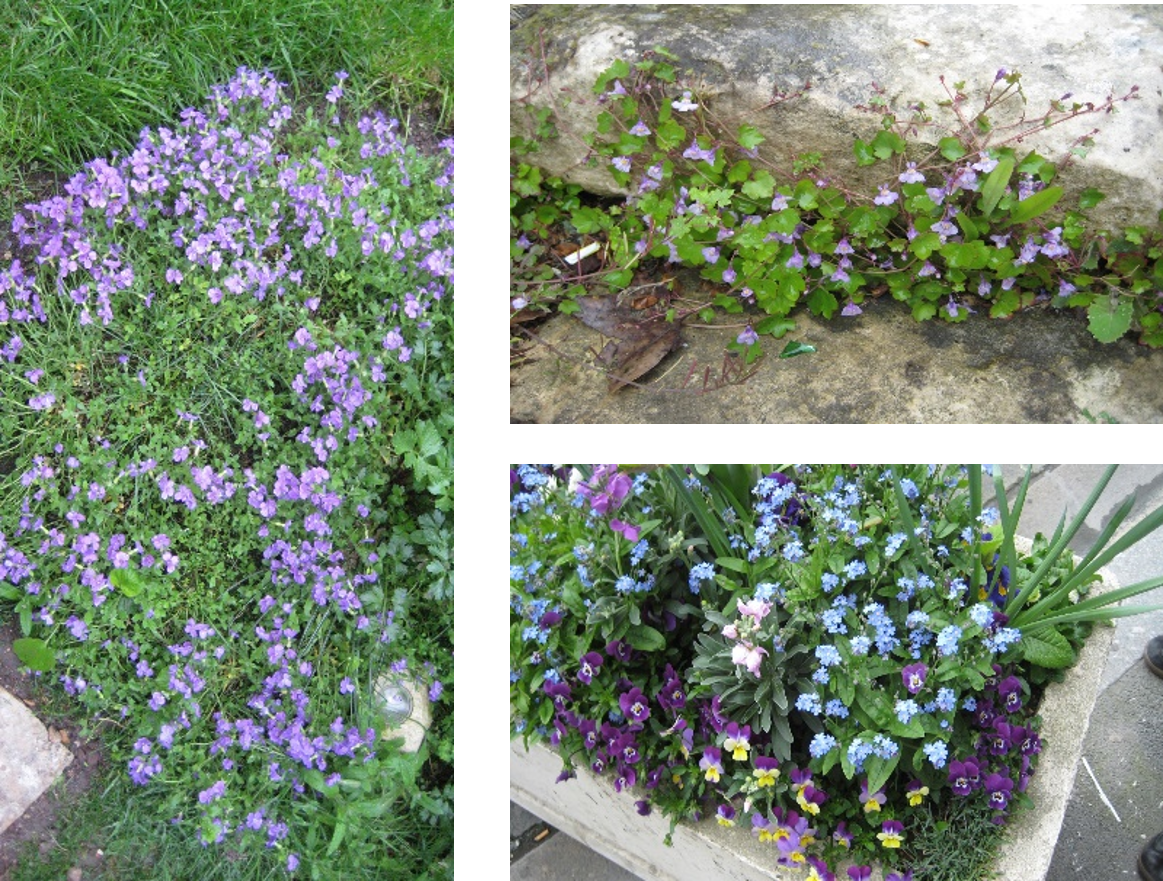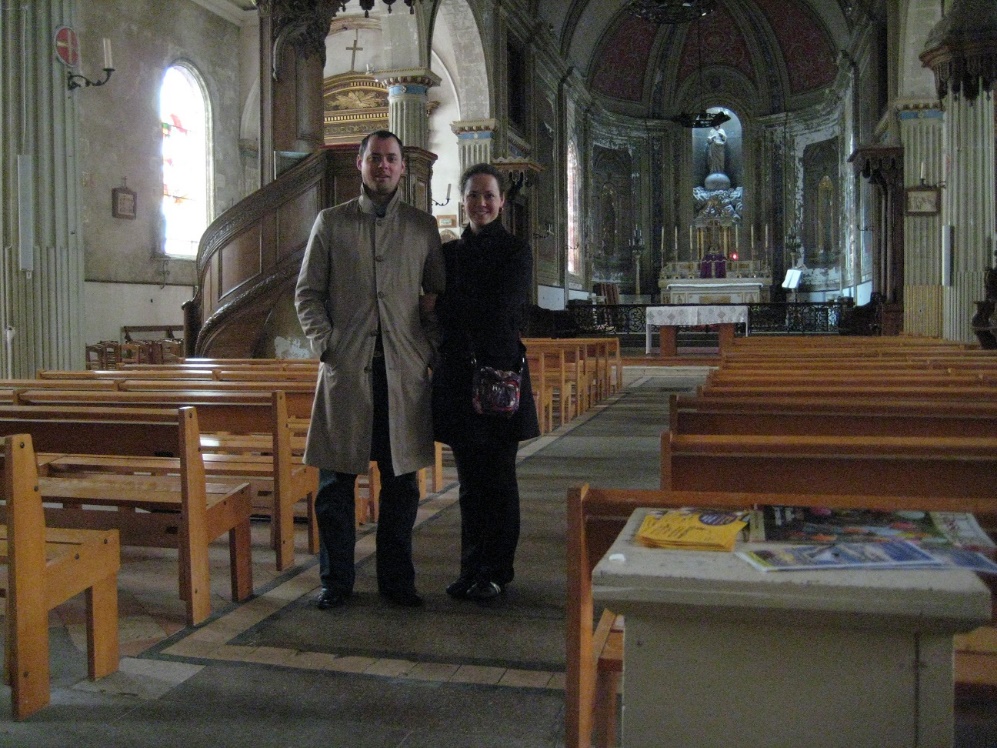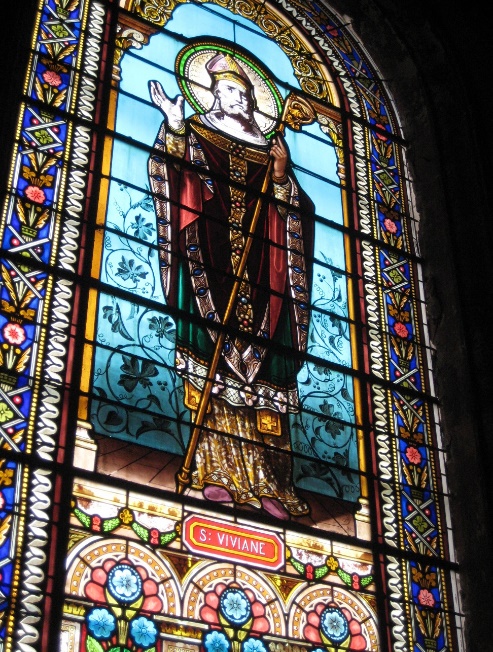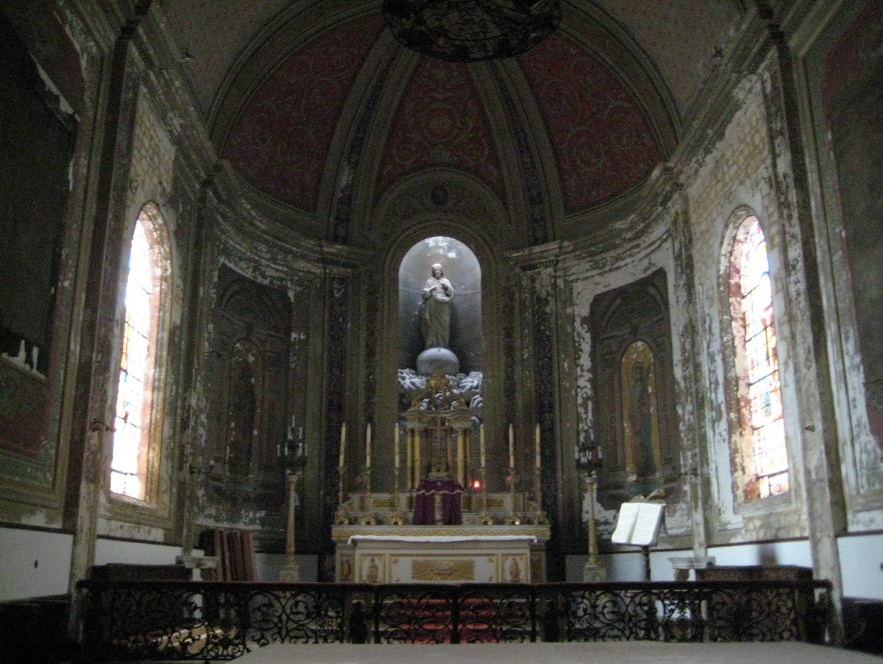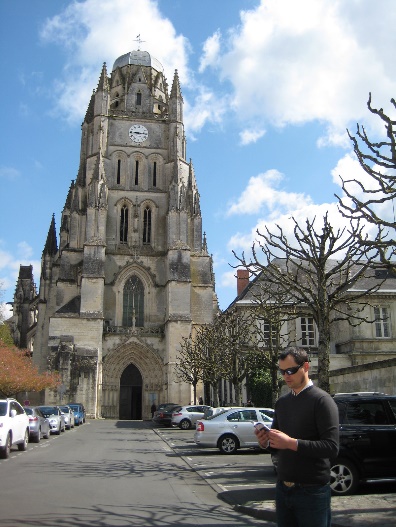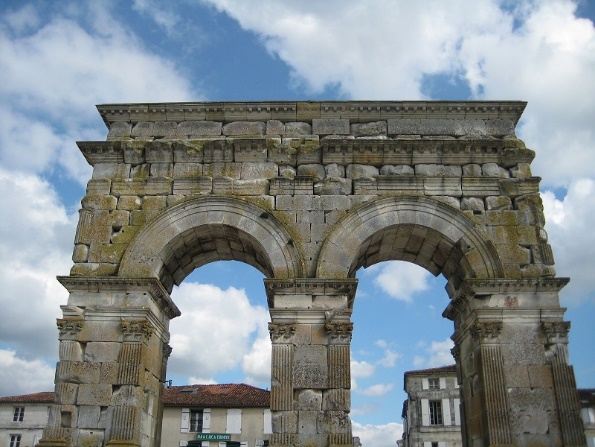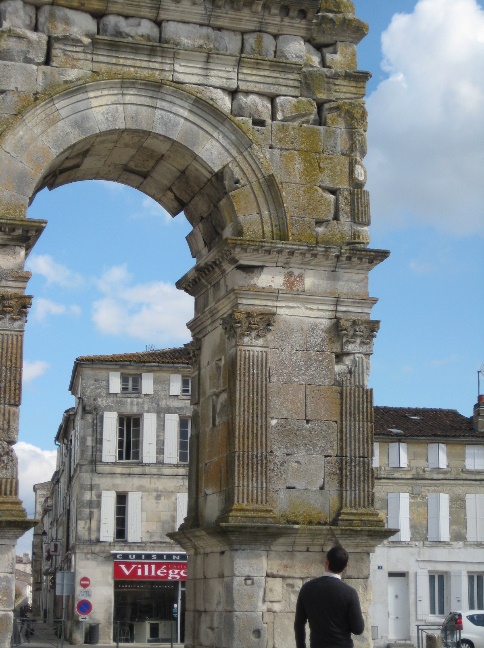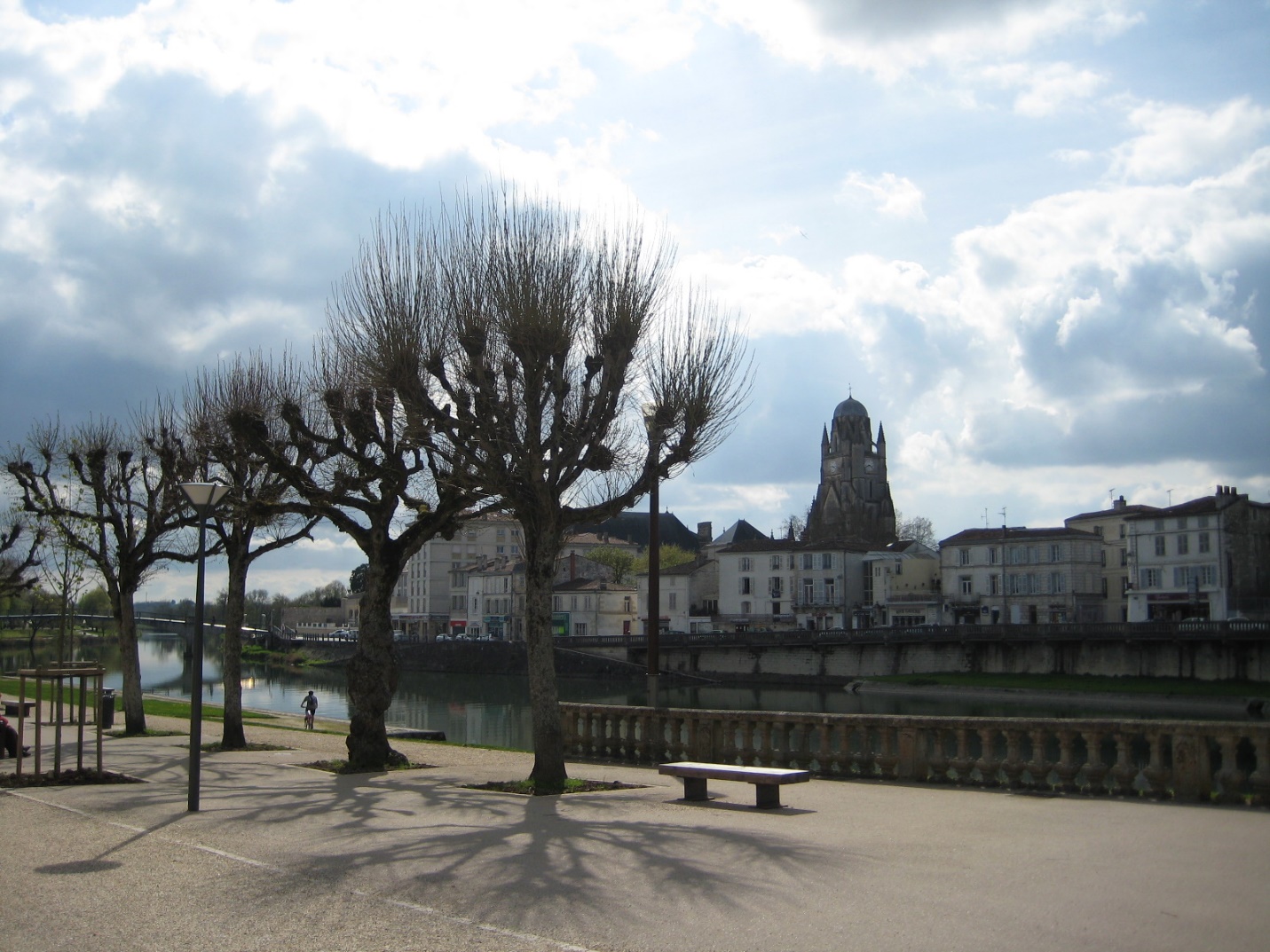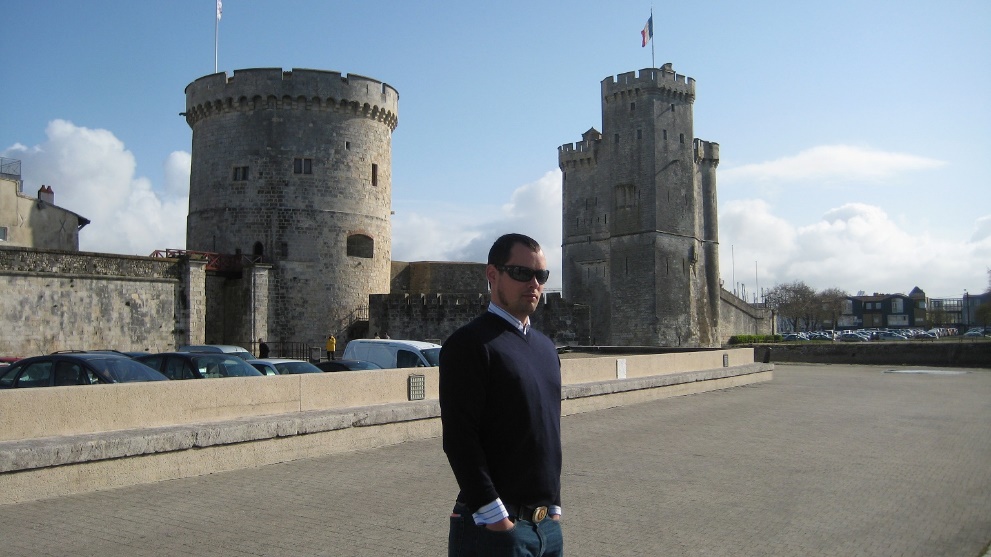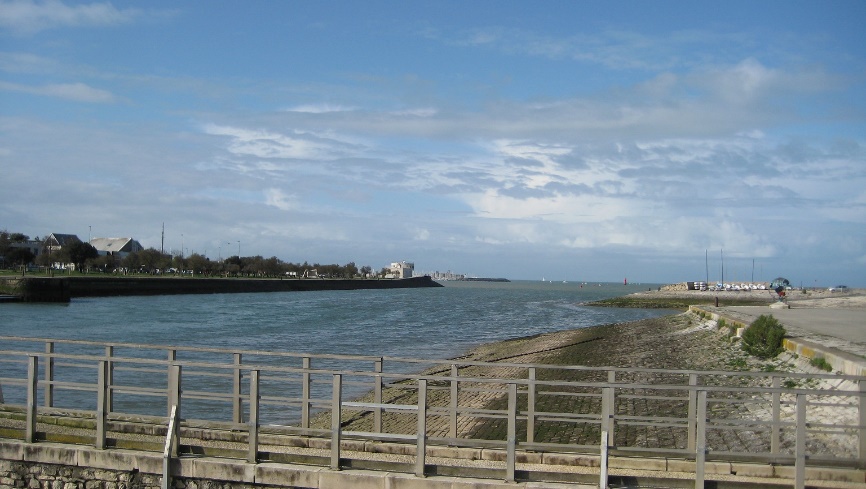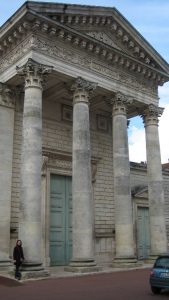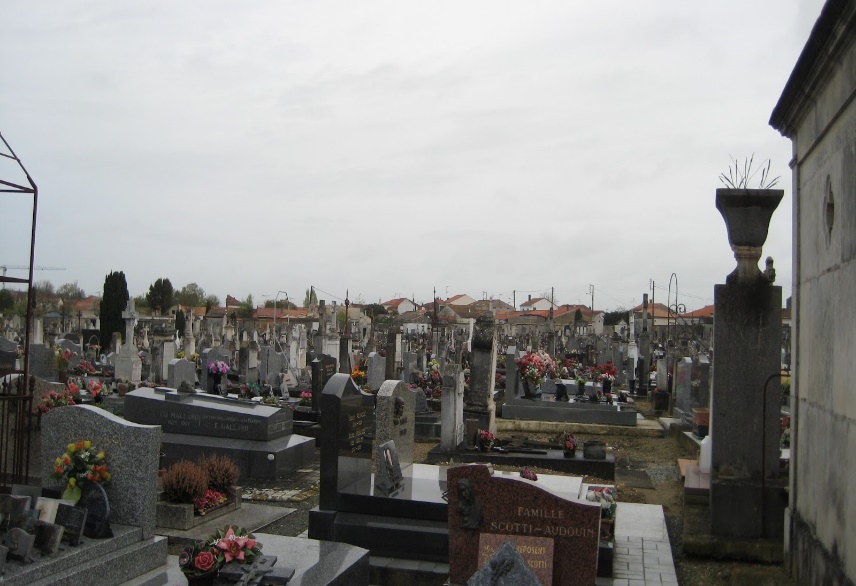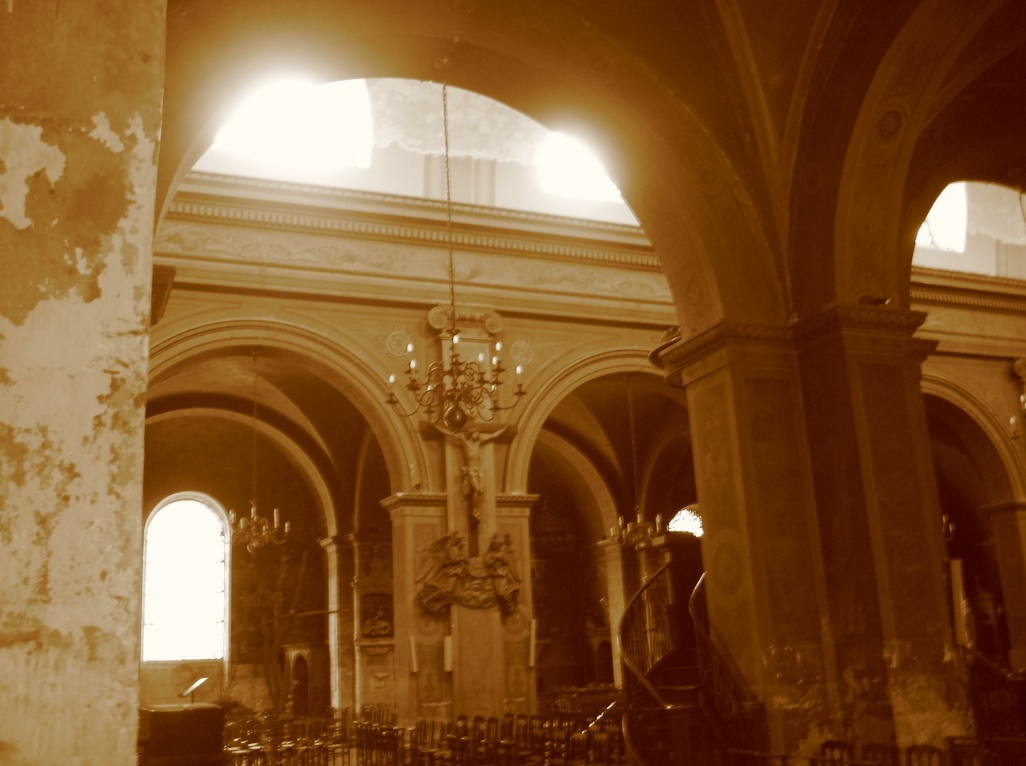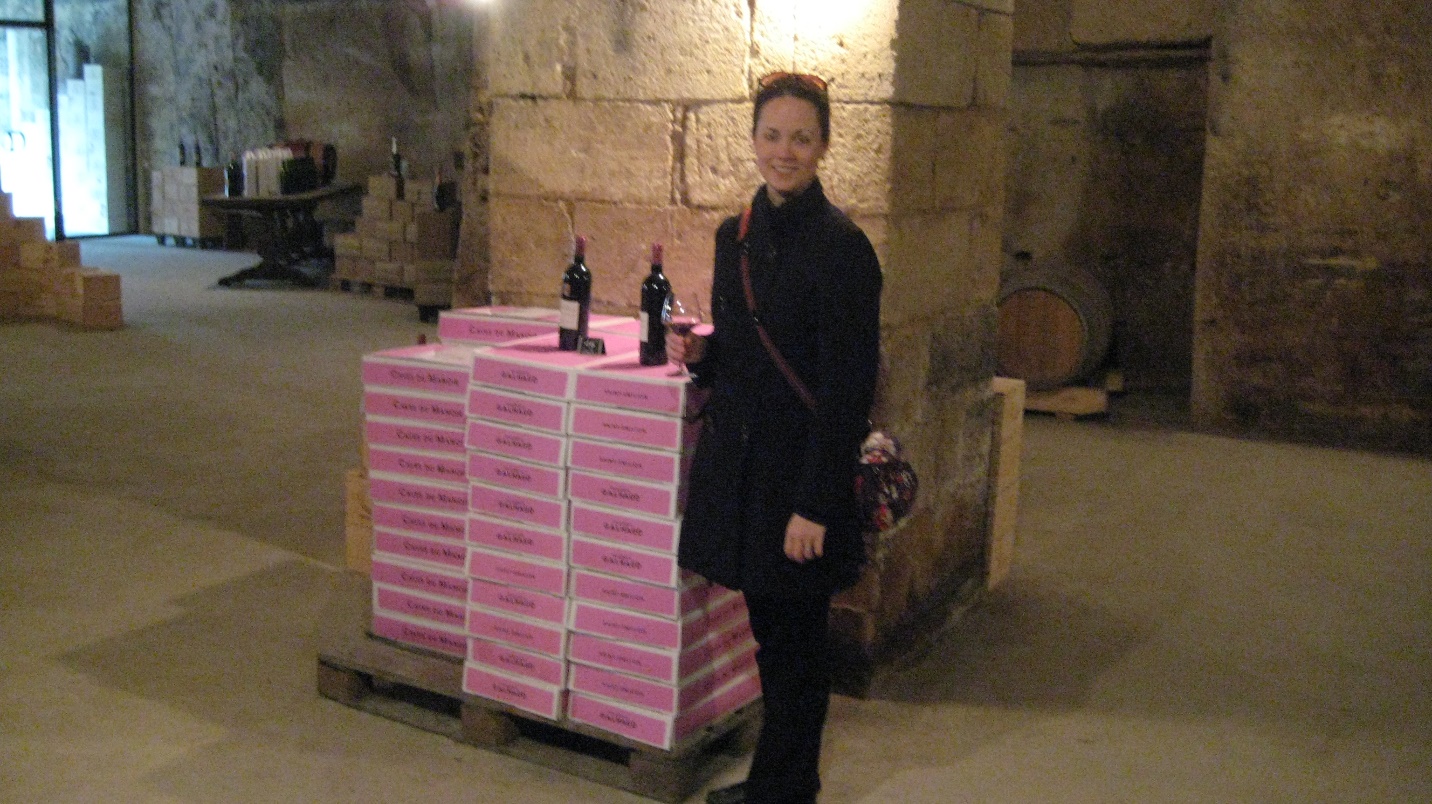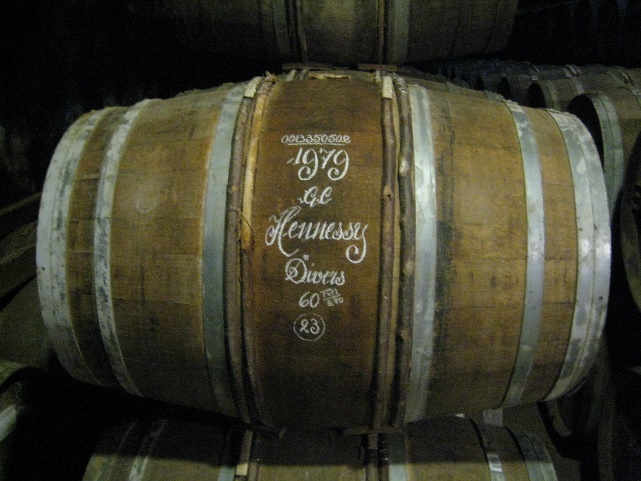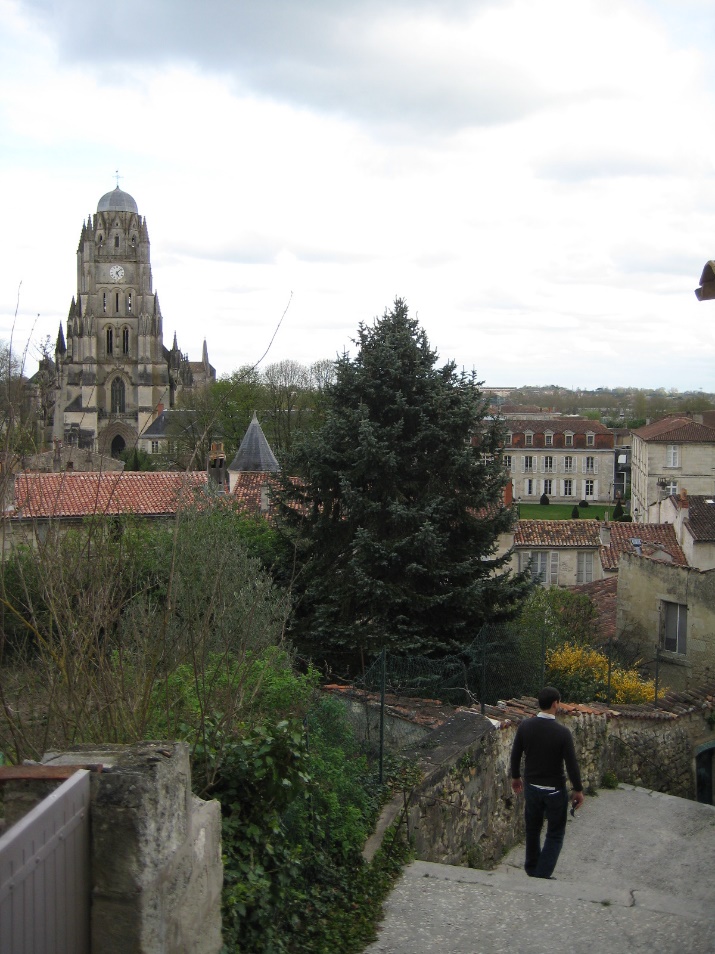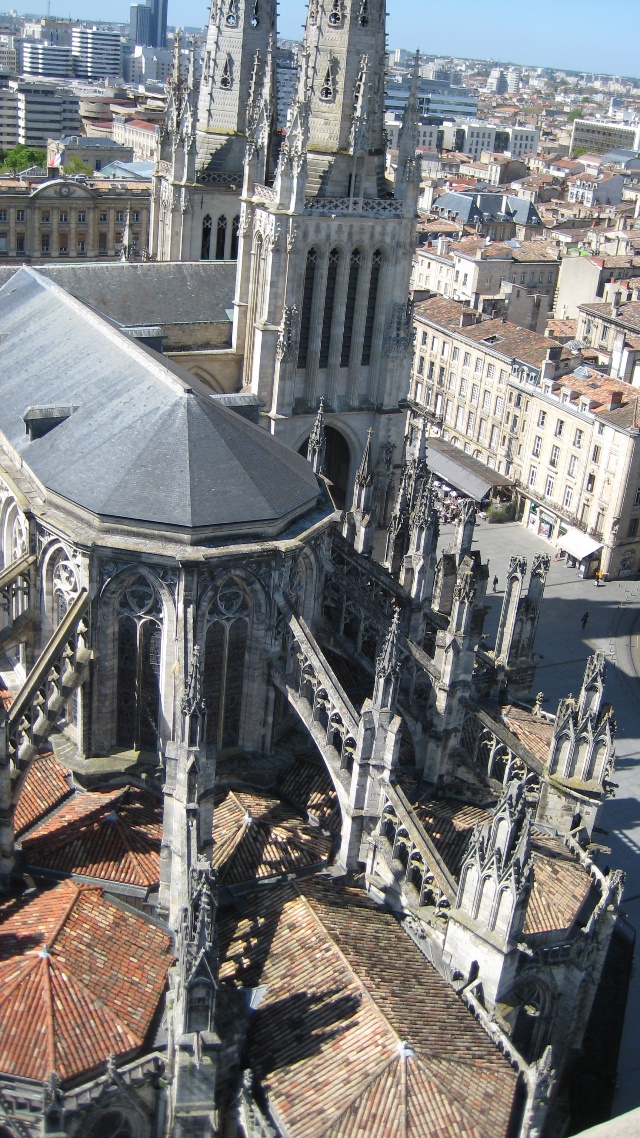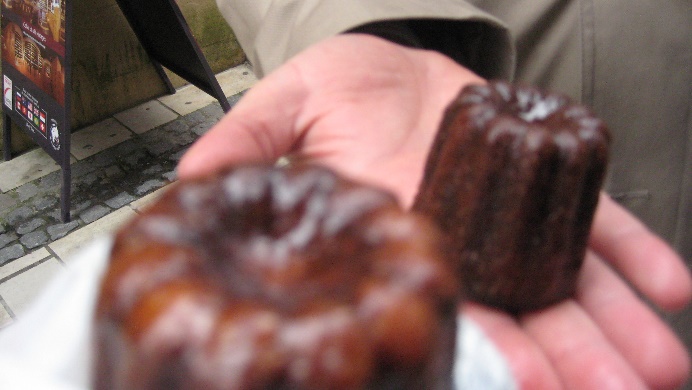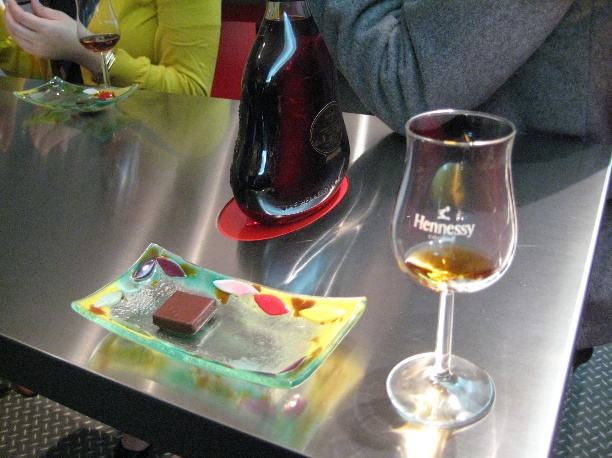By Lee Anne Violet (VFA#2672, P60572)
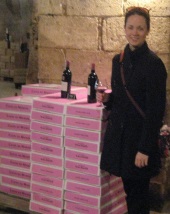
Lee at Maison Galhaud winery
“Violet? Maybe we should call you Purple!” “You some kind of delicate flower?” “Watch out. It’s Lee Anne Violent!”
Growing up with the last name Violet made me realize two things. First, creativity plays no part in the taunts of your average grade-schooler. Second, those kids cued in on something – my last name was out of the ordinary. That realization prompted questions. Where did it come from? Who were the people that passed on this name? And why wasn’t it something normal like Olson or Carlson, like the rest of my fellow Scandinavian Minnesotans?
The answers I received to these questions were at best murky family lore. The only detail regarding our name I was able to prize was that my great-great grandfather changed it from Violette to Violet to simplify pronunciation.
Flash forward thirty-odd years and I finally had the time and resources to delve into my family history. Imagine my surprise when I discovered not only is there an entire book written on this branch of my family tree, but that the Violettes boasted their own family genealogical society!
After contacting the Violette Family Association, I scoured the Internet for a copy of Rita Lippe’s The Descendants of Francois Violet. As a self-professed Francophile, seeing our French origins so neatly detailed meant I was almost immediately planning a trip to see these places for myself.
In February of 2011, I recruited my brother to join me and we did just that.
According to The Descendants of Francois Violet, there are four towns in France of significance to Violet origins: Saintes, La Rochelle, Rochefort, and Villejesús. Our itinerary included the first three, which also happen to be the largest.
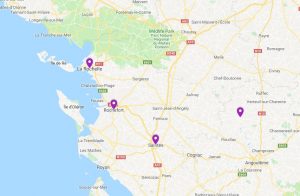
Closeup map showing French towns of importance to Violet/Violette family history. West to east they are La Rochelle, Rochefort, Saintes, and Villejesús.
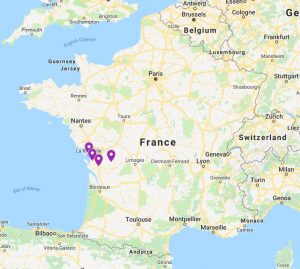
Overview map of French towns of importance to Violet/Violette family history. West to east they are La Rochelle, Rochefort, Saintes, and Villejesús.
French towns of importance to Violet/Violette family history. West to east they are La Rochelle, Rochefort, Saintes, and Villejesús.
SAINTES: FIRST STOP
We arrived early spring in the Charente-Maritime region of western France. Although there was a chill in the air, it was offset by brightly colored flowers throughout our travels – especially a variety of purple flowers, perhaps part of the Viola genus. It was fitting for the theme of our trip.
Saintes is a town of roughly 26,000. An appropriate first stop, it was birthplace to Francois Violet, our North American family progenitor. This was also where Francois’ parents Charles and Marie David were married. Both Francois’ baptism and his parents’ wedding took place at the church of St. Vivien. Rebuilt in the 1800’s, the newer construction supersedes the site of the original church that would have been familiar to Francois and his parents.
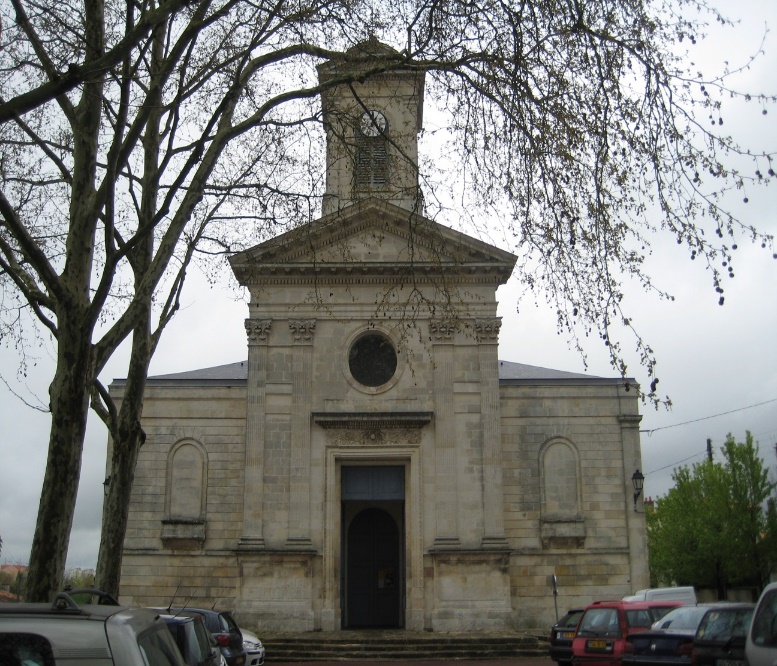
Church of St. Vivien, Saintes, France. Building is the newer structure built over the church Francois Violet would have known.
Although not the original structure, this site was the location for some of the Violets’ most important milestones. Being so close to where they must have stood got me to wondering anew about my ancestors. Since the church is located at the center of town, did they live within walking distance? If so, where exactly was the place they called home? Were they a happy family within its walls?
As I stood in the center of the church, I realized I no longer needed to ask myself where my name came from.* I was standing as close to ground zero as I was ever going to get.
But now I was asking new questions about my ancestors. Not that I was expecting answers. Despite the fact that I now possessed more facts about the Violet line than ever, it occurred to me getting closer to the Violet story in France only meant there were more things I might never know.
*A nice 360° view of the church interior is available on Google Maps.
Besides finding more to ponder about the Violet family, Saintes has quite a bit to offer as a tourist destination: Saint-Pierre Cathedral, a roman amphitheater, and the Arch of Germanicus.
Saintes itself has a nice quiet pace. And since we were driving, it was easy to get around. We were able to see everything of note in a day and a half.
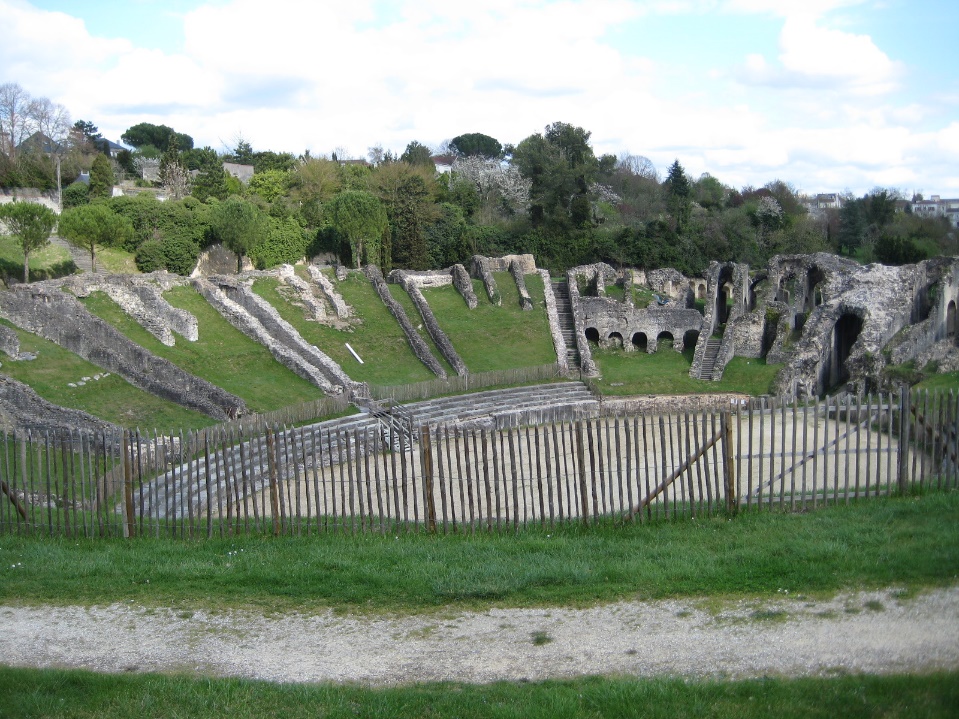
Ancient amphitheater that served the citizens of Mediolanum Santonum, Saintes as it was known when it was the Roman capitol of Aquitaine.
LA ROCHELLE: LAUNCH PAD TO THE NEW WORLD
Saintes served as home base for our family research travels and was only an hour’s drive to our second destination, La Rochelle.
No distant family member is on record as having been born, married or died here but this place is significant nevertheless. In fact, I found it to be the most momentous location of all because it was here Francois Violet departed France for the New World.
La Rochelle is good-sized town of 75,000 people. An Atlantic coastal town, there is a maritime theme everywhere. Main attractions include the harbor, lighthouses, and the two medieval towers guarding the bay. In warmer weather, it’s a popular spot for boating, yachting, windsurfing, and fishing.
Standing at the Vieux Port (Old Harbour), I had reached the place I was most excited to see. Facing west over the Atlantic, I saw for myself the view Charles Violet, his wife Marie David, and their 5-year-old son, Francois, would have shared as they boarded L’Intrepide, and headed for Nova Scotia in 1749. Here a little boy got on a ship and crossed an entire ocean. Here was the place at which the name Violet left France, soon to establish roots on the eastern coast of the New World, producing an offshoot that migrated to Minnesota, and would eventually make its way down to me.
Now I had even more questions. Why did the Violets to leave France?* Were the circumstances dire? What kind of life were they trying to build? How did that little five-year-old boy fare crossing the Atlantic?
No answers, but the questions brought me closer to these people. And physically being in the same place was more enlightening than a family tree diagram could ever be. Standing there with nothing but miles of ocean between me and the eastern coast of Canada, I was able to feel the gravity of leaving one’s homeland. Would I be able to travel 3,000 miles on a wooden ship to a life unknown? That’s a question I’m still attempting to answer.
There was little else to see in the way of Violet landmarks in La Rochelle besides the seaside harbor structures, so we went on to explore the rest of the town. We found it more briskly paced than Saintes, with plenty of bars and restaurants, shops, and ornate architecture. As we were there during the colder months, I could easily see how the ocean would add an entirely different dimension to La Rochelle during warmer temps – an excellent excuse to return.
* Since 2011, updated information on the Violette family history was published in 2014 in A Violette History, a book by the Violette Family Association, available on Amazon. Research indicates Charles may have been motivated to move to the New World by a financial incentive. At the time, King Louis XV was offering a grant of 150 livres for every citizen willing to cross the Atlantic and settle in Ile Royale (modern day Cape Breton Island). France’s aim was to fortify their holdings in the area after recovering the territory from Great Britain in 1748. Charles’s trade as a roofer would have been in demand in rebuilding Fortress Louisbourg.
ROCHEFORT: END OF OUR LINE
Rochefort was our final Violet family stop. Unfortunately, we had to miss visiting tiny Villejesús, birthplace of Charles Violet, because we simply ran out of time. Yet another reason to return!
The port of Rochefort is roughly the same size as Saintes, with its population hovering around 25,000 inhabitants. It is situated on the estuary where the Charente river meets the Atlantic. In 1665, the site was designated for the creation of a navy arsenal. As such, it is an excellent example of a 17th-century “ville nouvelle,” or new town. The feel is different from Saintes and La Rochelle as the roads follow a grid system instead of ancient winding footpaths.
Sadly, Rochefort was not the backdrop for happy Violet family events. Charles Violet and his family lived here before venturing to the New World. Not long before he left, he lost two young children: three-year-old Elie Violet in 1746, and 8 ½-month-old Marie Violet in 1747. He returned to France in April of1759, via La Rochelle after being deported from Louisbourg. Within months, Charles had made his way back to Rochefort where he would lose his second wife, Marie Sudois Violet, on November 16, 1760.
Charles married a third time in Rochefort in 1761, and four years later, his third wife, Catherine Ytier, bore him a son named Jean-Nicolas Violet. Sadly, Charles did not live to see his final child’s birth, dying November 13, 1765, age 49.
It is said Rochefort’s church of St. Louis is where Charles Violet was laid to rest. While it was fairly easy to find the Church of St. Louis, the ease of trip thus far was interrupted by a few minor setbacks.
We arrived mid-afternoon to find the church of St. Louis completely locked. After meandering around back, we were able to locate someone who informed us services would be held early evening and the doors would be open then. We passed the time trying to track down the grave of Charles Violet. All we knew was that he was laid to rest at the church of St. Louis. However, all the graves had been moved to a more modern cemetery located just outside of town.
After locating the cemetery, we found its gates were locked as well. Fortunately, there was a main records office that was open. Unfortunately, the woman working at the cemetery office spoke no English. But with my broken French and a pen and paper I was able to tell her we were looking for the grave of Charles Violet and provided the date of his death. While she couldn’t locate him in her records, she told us to have a look around in the cemetery if we wanted.
As you can see from the photo below, it would have been like finding a needle in a haystack. We had a quick look around, and realizing we’d never find his grave, headed back to the church of St. Louis. This time the large front doors were open.
The church of St. Louis was our final stop on our way out of Rochefort. After our attempts to find the grave that day, we were understandably tired. The physical state of the church did little to help our energy level with its peeling paint, cold dark atmosphere, and strong mildew smell.
Finishing up the family history trip in this mood was a little sad. These obscure French towns with their churches in much need of repair reminded me to take the long view of history. The questions in my mind were now mostly about my own legacy. Would my descendants be seeking out my life’s journey in 300 years’ time? What would be left for them to discover?
Thankfully, our next stop was the village of Cognac, where my brother and I could discuss these thoughts over a glass of the town’s famous liquor.
EXPLORING FRANCE BEYOND THE VIOLETS
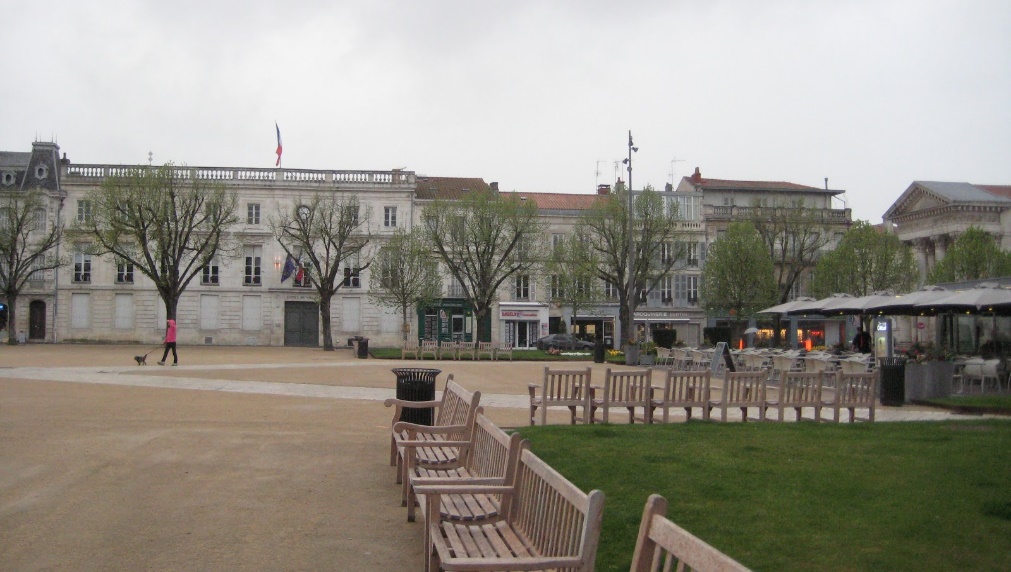
Main square of Rochefort, France. Note pointed roof and columns of the church of St. Louis to the right of the square.
Despite the somber end to the final portion of our Violet-related travels, our trip was overall fantastic. And while its primary purpose was seeking out our French origins, we thoroughly enjoyed many other aspects of France. Our day in Cognac was spent touring the Hennessey distillery and sampling their finest. We explored the hilltop town of Saint-Émilion where I sat on a chair carved out of the side of a cave by the saint himself, sipped the best glass of red I can ever remember, and tried the town’s famous eggy dessert, the canelé. We climbed to the top of the cathedral in Bordeaux and had an outstanding bowl of Japanese noodle soup (even traditional French faire gets old after four days).
I whole-heartedly recommend visiting this region to anyone. We ate, drank, and saw as much as we were able and barely scratched the surface of the Charente-Maritime region.
Travel is one of life’s greatest pleasures – even more so when your destination feels like more than the average tourist trap. Some people travel around the world to participate in marathons. Others might travel solely for culinary pursuits. I’m a history buff, so that’s my draw. Having my own family history to seek out added great depth and meaning to our trip.
As for all those new questions that occurred to me during my travels? They’ll most likely never be answered, but no matter. They were entertaining to ponder and brought me closer to my origins than words and family tree diagrams ever could. And thanks to Rita Lippe’s The Descendants of Francois Violet, I was able at least to answer those initial questions I wondered about in grade school.
Now, whenever someone comments on my last name, it’s always complimentary. The few barbs I received in grade school were a tiny price to pay for all the discoveries I’ve made because of my last name.
I wouldn’t change it for anything.


